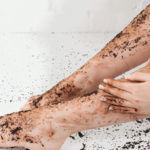If you are a long-time enthusiast of cosmetics, then you are likely familiar with compounds such as AHA, PHA, LHA, and BHA. Today, we will explore the similarities and differences between these compounds to help you gain a better understanding and choose the right skincare products for yourself!
1 Similarities of AHA, PHA, LHA, and BHA
 AHA, PHA, LHA, and BHA all have Carboxylic and Hydroxyl functional groups
AHA, PHA, LHA, and BHA all have Carboxylic and Hydroxyl functional groups
AHA, PHA, LHA, and BHA are all organic acid compounds that contain carboxylic and hydroxyl functional groups in their structure. These four compounds are commonly used in skincare products because they have the ability to gently exfoliate dead skin cells, aid in acne treatment, and help achieve smoother skin.
2 Differences between AHA, PHA, LHA, and BHA
Source
The most significant difference in terms of source among the four types of acids is the bonding between molecules, specifically:
- AHA: Molecules are bonded together by alpha bonds.
- BHA: Molecules are bonded together by beta bonds.
- PHA: Molecules are bonded together by poly bonds.
- LHA: Molecules are bonded together by beta-lipo bonds.

Source of AHA
AHA (Alpha Hydroxy Acid) is a group of acids derived from animals and plants such as sugar cane, milk, apples, grapes, etc. There are typically six types of AHA commonly used in the cosmetics industry, including Citric Acid, Glycolic Acid, Hydroxycaproic Acid, Lactic Acid, Malic Acid, and Tartaric Acid.

Source of BHA
BHA (Beta Hydroxy Acid) is an organic compound with carboxylic and hydroxyl functional groups separated by 2 carbon atoms. It is commonly found in the form of salicylic acid and extracted from the bark of Willow trees. BHA is oil-soluble and is primarily used for its ability to penetrate deep into the skin and pores, making it effective for oily skin, sensitive skin, large pores, and acne-prone skin.

Source of PHA
PHA (Polyhydroxy Acid) is an organic acid with more hydroxyl functional groups in its structure. It is derived from AHA and is often found in the form of Lactobionic Acid or Gluconolactone. PHA has larger molecular size, which makes it less effective at exfoliation compared to AHA but also less irritating.

Source of LHA
LHA (Beta-Lipo Hydroxy Acid) is a carboxylic acid compound with a structure consisting of a hydroxyl group and a carboxyl group attached to a benzene ring. Its composition and structure are equivalent to BHA, but due to a different arrangement of molecular chains, LHA dissolves in oil better. It is particularly suitable for oily skin and helps control oil secretion.
Mechanism

Mechanism of AHA
AHA is typically used in skincare products at concentrations ranging from 2-10%. It works by removing dead skin cells from the uppermost layer of the epidermis through ion interference between cells. AHA does not penetrate deep into the skin and pores but helps in exfoliating rough, dull skin and cleansing the pores.

Mechanism of BHA
BHA is oil-soluble and usually used at a concentration of around 1%. It has the ability to penetrate deep into the skin, especially for oily skin, sensitive skin, large pores, and acne-prone skin. BHA helps remove impurities, acne bumps, sebum, and control the amount of oil secreted by the skin.

Mechanism of PHA similar to AHA but less irritant
PHA is typically used at a concentration of 4-10% and has a mechanism of action similar to AHA. However, due to its larger molecular size, PHA has a harder time penetrating the skin’s surface, resulting in less effective exfoliation compared to AHA. PHA is less irritating and suitable for sensitive skin.

Mechanism of LHA similar to BHA but better oil control
LHA has similar mechanisms to BHA, including penetration and exfoliation, pushing out acne and excess oil from the pores. However, LHA dissolves in oil better than BHA, making it more effective at oil control for oily skin.
Benefits

AHA-containing products moisturize and treat dry, acne-prone skin
AHA not only brightens and smooths the skin but also has moisturizing properties. It is often used to treat dry, acne-prone skin and can also help prevent signs of aging, promote collagen production, and reduce melasma, freckles, and dark spots.

BHA-containing products help fight inflammation and improve acne condition
PHA, like AHA, can help achieve smooth and radiant skin by minimizing melanin production. PHA is recommended for treating acne-prone sensitive skin as it helps maintain skin moisture, is less irritating, and better at repairing damaged skin compared to AHA.


LHA-containing products have great anti-aging effects
LHA has similar functions to BHA, including anti-inflammatory and antibacterial properties. It also has anti-aging effects due to the presence of specific components in its molecular structure.
These are the similarities and differences between AHA, PHA, LHA, and BHA. We hope this article has provided you with a better understanding of these compounds and helps you choose the most suitable skincare products for yourself!
Shop for skincare products with us to take care of your skin!



































